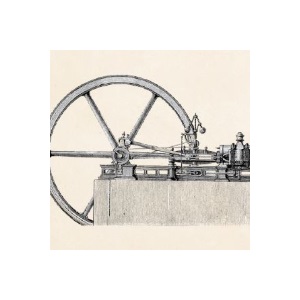
In 2019, the two-stroke engine is still being used in mopeds and lawnmowers. The technology for this engine came directly from the brain of the French inventor, Lenoir, over 150 years ago.
The inventor
Étienne Lenoir (1822-1900) was born in the Belgian village of Mussy-la-Ville. At the age of twelve he already had a great fascination for machines. In the years that followed, he taught himself the principles of technology and chemistry. In 1850 he left for Paris and in 1859 where he designed the first engine with internal combustion. In 1859, he obtained patent No. 43624 for 15 years. In France he became a naturalized Frenchman.
The invention
At that time, machines mainly worked using steam. Lenoir wanted small machines that could run on coal gas and city or light gas that was available everywhere in Paris. The principle was a steam engine, where in the first half of the first stroke was a mixture of 6% city gas and 94% air was sucked in. Halfway through the first stroke, the uncompressed mixture was ignited with a spark plug – also a patented Lenoir invention. The burning gas mixture expanded and pushed out the piston with great force. During the incoming second stroke, the burned gas mixture was extruded.
In Lenoir’s machine, various knowledge from his time comes together: the steam engine and the recently invented Ruhmkorff ignition coil, as well as the spark plug, Lenoir’s own invention. The first engine with internal combustion, double-sided operation, two-stroke and without prior compression, was invented.
The sequel
Soon after, the German Nikolaus August Otto (1832-1891) developed a Lenoir-inspired engine powered by gasoline: the atmospheric gas engine, the flugkolben engine. This was a forerunner of the ultimate four-stroke engine. This engine was already working better and caused a sensation at the World’s Fair in Paris that year. The final breakthrough followed in 1876. That year, Otto developed the four-stroke engine, which was to become the prototype for later combustion engines. Four-stroke is more fuel efficient because the fuel mixture is optimally refreshed. It became known as the Otto engine.
Otto applied for a patent for an improved version (granted as DE532C). Independently of Otto, others (Beau de Rochas) were working on similar developments. Otto’s patent rights were therefore declared null and void. He reached a settlement and the product became a great success.

